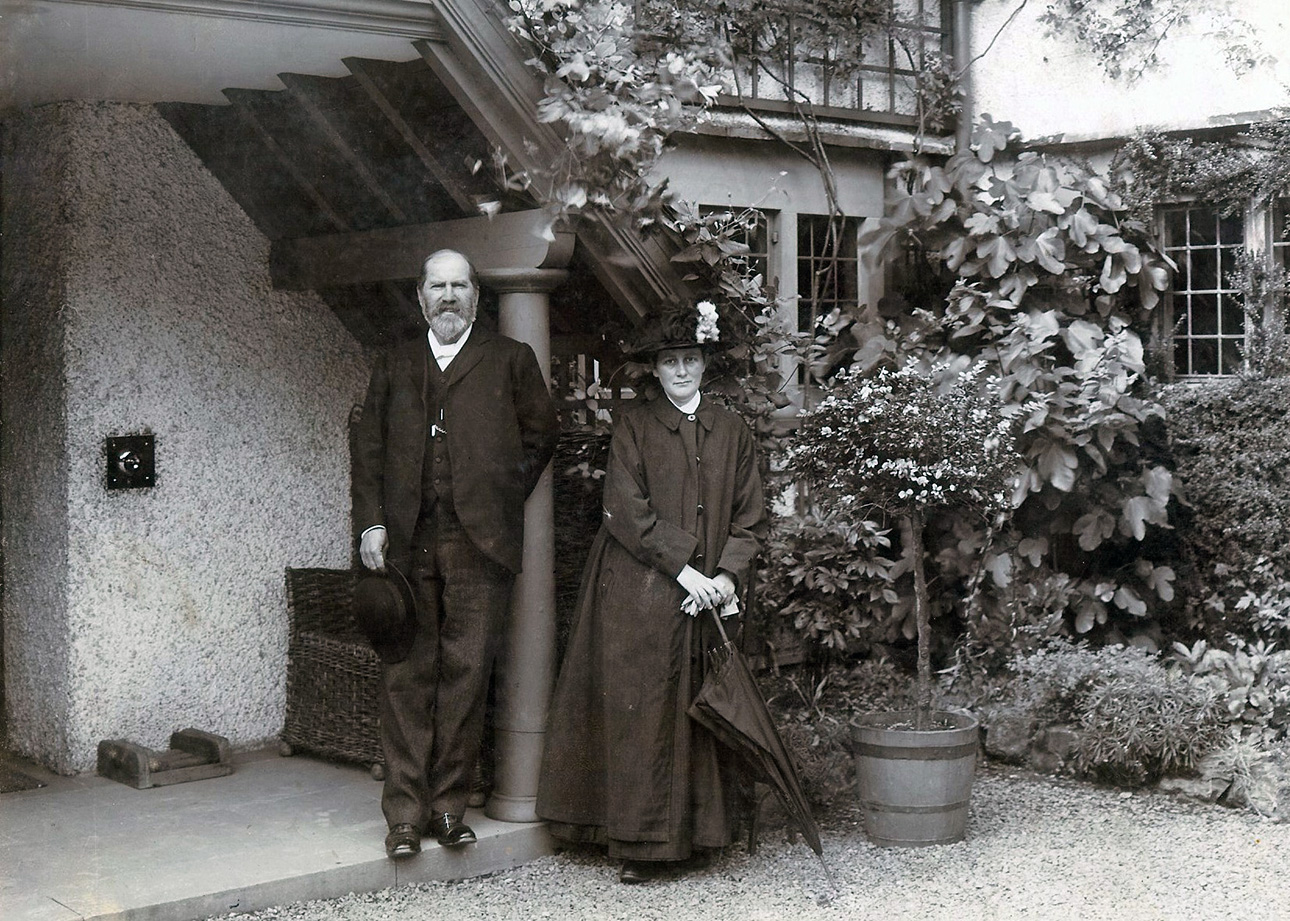RAWNSLEY
defender of the lakes
Canon Hardwicke Rawnsley
COME VISIT THE ARMITT TODAY
Purchase tickets online for the
Armitt’s current exhibitions
RAWNSLEY
DEFENDER OF THE LAKES
The Canon Hardwicke Rawnsley exhibition celebrates a prolific author, poet and activist who had an opinion on everything and became known as “Defender of the Lakes”.
He studied under Ruskin at Oxford and went to work in inner city housing projects in London with Octavia Hill, with whom he later co-founded the National Trust. He was involved with the Commons Preservation Society and Open Spaces Society with William Morris. He became Vicar at Wray, near Ambleside, in 1882. He met Beatrix Potter there and was a lifelong friend. His wife Edith Rawnsley is thought by many to be the true driving force behind the creation of a school of “industrial arts”, in Keswick, which served both to employ the unemployed and retain metalworking skills that were under assault from mass production.
While looking at the displays you might like to consider whether there is a difference between Rawnsley’s activism and Potter’s actions, and those of later environmentalists such as Greta Thunberg or the Extinction Rebellion movement? Rawnsley was a challenger and promoter of mass trespass and practical doer, but above all a pragmatist.
Can we compare a mass trespass on Latrigg with Extinction Rebellion’s “This land is our land” mass trespass project?
Can we compare their ideas that the world is in conflict between those that would exploit the planet for profit or preserve it, with Canon Rawnsley and Octavia Hill who sought to preserve common land for future generations and give effect in John Ruskin’s ideas more than a century ago?
Thanks go to Arts Council England for funding this exhibition, Price Walker Antiques of Keswick for object loans, Michael Allen for the video on Rawnsley, Rosalind Rawnsley for research and information on her great grandfather, HDR, and Maurice George for the accompanying booklet.
RAWNSLEY
DEFENDER OF THE LAKES
The Canon Hardwicke Rawnsley exhibition celebrates a prolific author, poet and activist who had an opinion on everything and became known as “Defender of the Lakes”.
He studied under Ruskin at Oxford and went to work in inner city housing projects in London with Octavia Hill, with whom he later co-founded the National Trust. He was involved with the Commons Preservation Society and Open Spaces Society with William Morris. He became Vicar at Wray, near Ambleside, in 1882. He met Beatrix Potter there and was a lifelong friend. His wife Edith Rawnsley is thought by many to be the true driving force behind the creation of a school of “industrial arts”, in Keswick, which served both to employ the unemployed and retain metalworking skills that were under assault from mass production.
While looking at the displays you might like to consider whether there is a difference between Rawnsley’s activism and Potter’s actions, and those of later environmentalists such as Greta Thunberg or the Extinction Rebellion movement? Rawnsley was a challenger and promoter of mass trespass and practical doer, but above all a pragmatist.
Can we compare a mass trespass on Latrigg with Extinction Rebellion’s “This land is our land” mass trespass project?
Can we compare their ideas that the world is in conflict between those that would exploit the planet for profit or preserve it, with Canon Rawnsley and Octavia Hill who sought to preserve common land for future generations and give effect in John Ruskin’s ideas more than a century ago?
Thanks go to Arts Council England for funding this exhibition, Price Walker Antiques of Keswick for object loans, Michael Allen for the video on Rawnsley, Rosalind Rawnsley for research and information on her great grandfather, HDR, and Maurice George for the accompanying booklet.








REVIEWS
“My wife and I recently visited the Armitt and were delighted by the range of exhibits and the warm welcome from the knowledgeable staff. There is a fine display highlighting Beatrix Potter’s contribution to the local environment (and some of her wonderful watercolours) some very fine pictures to see including some very rare soft-ground etchings by William Green and many other delights. A visit to this excellent museum is well worth a detour!”
“We attended a book launch and were lucky enough to be able to see some of the fascinating treasures held at the Armitt Library & Museum. This place is a real treasure trove tucked away next to the University of Cumbria in Ambleside. Don’t miss it, it has some amazing things relating to really famous people such as Beatrix Potter, John Ruskin, Harriet Martineau and the pioneer of home schooling, Charlotte Mason. They also have a really good second-hand bookshop.”


RAWNSLEY
His Lake District campaigns brought Rawnsley into contact with many influential figures and, with fellow open space campaigners Robert Hunter and Octavia Hill, he began to discuss the need for a national body which could hold land and thus put it beyond risk of development – something which other conservation bodies could not do.
Discussions led in 1895 to the establishment of The National Trust for Places of Historic Interest or Natural Beauty.
RAWNSLEY
DEFENDER OF THE LAKEs
RAWNSLEY
MUSEUM HOURS
Monday-Friday: 10am – 5pm
Saturday: 10am – 5pm
Sunday: 10am – 5pm
ARMITT ADMISSION PRICES
Adults £6 including gift aid
Students £4
Children (under 16) Free
Museum Association
and Art Fund Members Free

